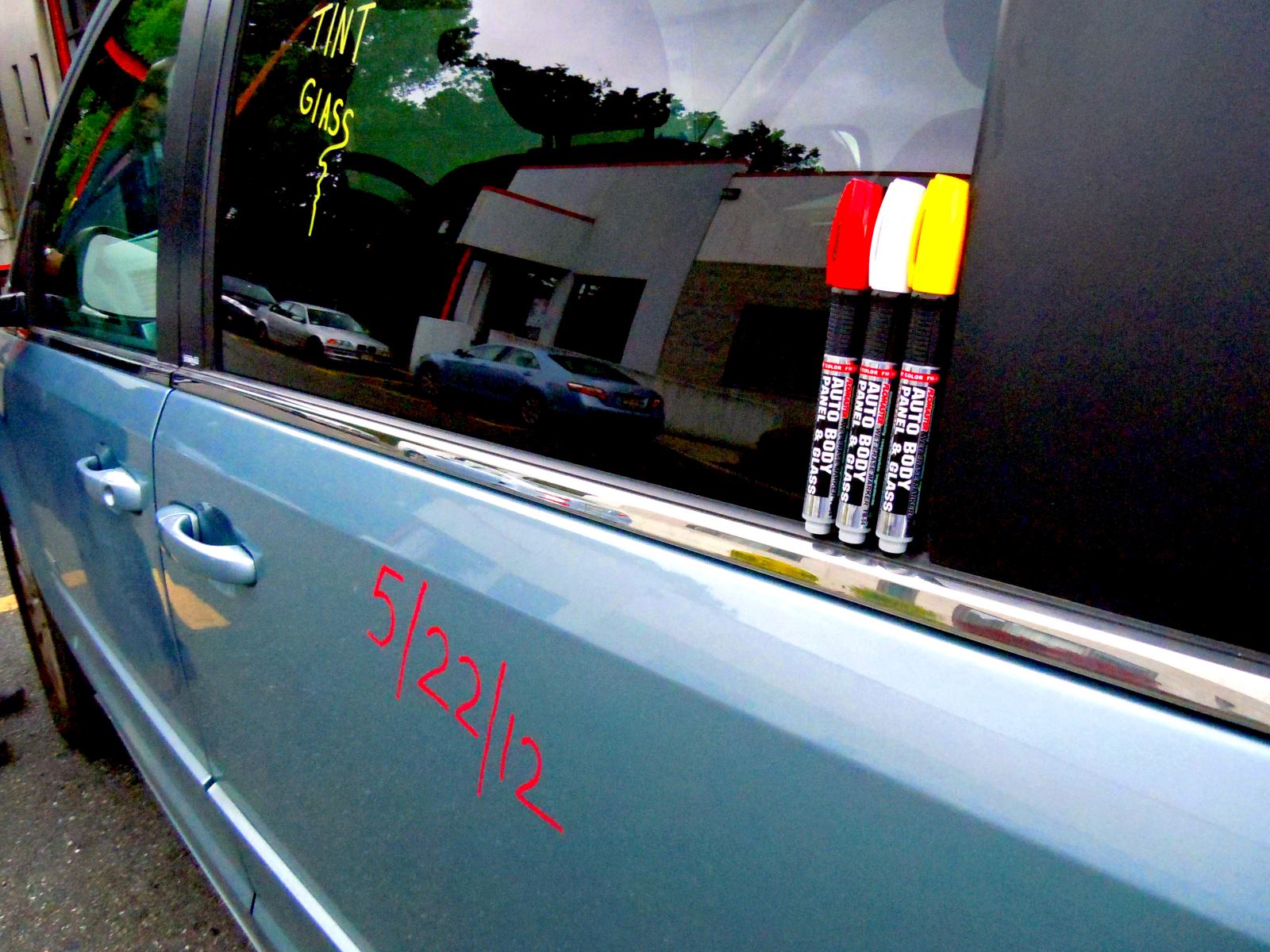Home>Technology>Home Entertainment Systems>How To Write A Television Script


Home Entertainment Systems
How To Write A Television Script
Modified: January 5, 2024
Learn the step-by-step process of writing a compelling television script for home entertainment systems. Gain valuable tips and techniques to create engaging content.
(Many of the links in this article redirect to a specific reviewed product. Your purchase of these products through affiliate links helps to generate commission for Storables.com, at no extra cost. Learn more)
Introduction
Welcome to the exciting world of television script writing! Whether you’re an aspiring writer looking to break into the industry or simply interested in the art of storytelling, understanding how to write a television script is crucial. Television has the power to captivate audiences with its compelling narratives, engaging characters, and immersive experiences.
In this article, we’ll explore the step-by-step process of writing a television script that will grab the attention of producers and viewers alike. From developing the concept and premise to creating memorable characters and crafting compelling dialogue, we’ll cover all aspects of the scriptwriting journey. Additionally, we’ll dive into the formatting guidelines, incorporating visual and audio elements, and the importance of editing and revising your script to ensure its success.
So, let’s dive in and learn how to create a compelling television script that will keep audiences on the edge of their seats!
Key Takeaways:
- Understanding the fundamental three-act structure of television scripts, including setup, confrontation, and resolution, is crucial for captivating audiences and creating compelling narratives that keep viewers engaged.
- Crafting engaging characters, purposeful dialogue, and incorporating visual and audio elements are essential elements in creating a successful television script that stands out and captures the attention of producers and viewers alike.
Read more: How To Write A Television Pilot
Understanding the Structure of a Television Script
Before diving into the details of writing a television script, it’s important to understand the fundamental structure that scripts typically follow. Most television scripts adhere to a three-act structure, consisting of the setup, confrontation, and resolution. Let’s break down these three acts:
- Act 1: Setup
- Act 2: Confrontation
- Act 3: Resolution
The setup introduces the audience to the world of the story and establishes the main characters, their goals, and the central conflict. This section is crucial in capturing the viewers’ attention and setting the stage for the story ahead. It’s important to create a compelling hook or inciting incident that draws the audience in and keeps them engaged.
The confrontation is where the story develops and the conflict intensifies. Tensions rise, obstacles are faced, and characters undergo challenges and transformations. This act keeps the viewers on the edge of their seats and propels the story forward. It’s essential to maintain a balance between action, character development, and rising stakes to keep the audience engaged.
The resolution is the culmination of the story, where the central conflict is resolved, and loose ends are tied up. This act brings closure to the narrative and leaves the audience with a sense of satisfaction. It’s important to provide a satisfying resolution while still leaving room for potential future storylines or cliffhangers.
Within these acts, each episode follows a specific structure, typically consisting of teaser, acts, and tag. The teaser is the opening scene that grabs the viewers’ attention and sets the tone for the episode. Acts are the main sections of the episode, usually divided into two or three parts, each with its own set of rising action and climax. The tag is the closing scene that leaves the audience with a memorable final moment, enticing them to watch the next episode.
Understanding the structure of a television script is crucial as it provides a solid foundation for storytelling. It allows you to effectively pace your story, build tension, and create meaningful character arcs.
Now that we have a solid grasp of the structure, let’s move on to the next step: developing the concept and premise of your television script.
Developing the Concept and Premise
When it comes to writing a television script, a strong and unique concept is the linchpin that holds everything together. The concept is the big idea behind your show, while the premise provides the specific angle or approach that sets it apart. Here’s how you can develop a compelling concept and premise:
1. Identify Your Genre: Start by determining the genre of your show. Is it a drama, comedy, thriller, or something else? Understanding the genre will help you define the tone, style, and audience of your script.
2. Brainstorm Unique Ideas: Let your creativity run wild and generate a list of potential concepts. Think about what makes your show different from others in the same genre. Consider unique settings, intriguing characters, or fresh twists on familiar storylines.
3. Refine Your Concept: Narrow down your list of ideas and choose the one that resonates with you the most. Consider its potential for longevity, marketability, and audience appeal. Refine the concept by adding layers and complexity, ensuring it has enough scope for multiple episodes and seasons.
4. Craft a Compelling Premise: Once you have the concept, develop a concise premise that summarizes the core idea of your show in a compelling and intriguing way. The premise should capture the essence of the story, evoke curiosity, and make potential viewers want to tune in.
5. Test the Viability: Share your concept and premise with friends, fellow writers, or industry professionals to get feedback. Assess whether the idea resonates with others and if there is potential for a sustainable and marketable television series.
Remember, developing a concept and premise is a crucial step in the scriptwriting process. It shapes the direction of your story and ensures that you have a solid foundation to build upon. With a compelling concept and premise in hand, you’re ready to move on to the next phase: creating engaging characters.
Creating Engaging Characters
When it comes to writing a television script, compelling and relatable characters are essential for capturing the audience’s attention and driving the story forward. Here are some steps to help you create engaging characters:
1. Understand Your Characters: Take the time to fully understand your characters before you start writing. Develop their backstories, motivations, desires, and flaws. The more you know about your characters, the more authentic and well-rounded they will become on the page.
2. Create Dynamic Relationships: Characters are shaped by their interactions with others. Make sure to create interesting dynamics and relationships between your characters. This can include friendships, rivalries, love interests, or family connections. These relationships will add depth and complexity to your characters, as well as create opportunities for conflict and growth.
3. Give Your Characters Goals: Each character should have their own wants and desires that drive their actions throughout the story. These goals can be in line with the main plot or unique to the character’s personal journey. Clear goals create a sense of purpose and motivation for your characters.
4. Develop Flawed Characters: Flaws and vulnerabilities make characters relatable and human. Avoid creating perfect characters who never make mistakes or face challenges. Instead, give your characters flaws and weaknesses that they must overcome. This will make them more relatable and allow for growth and development over the course of the story.
5. Provide Depth and Complexity: Characters should have depth and complexity to make them more interesting and multidimensional. Explore their strengths, weaknesses, fears, and secrets. Avoid stereotypes and clichés by adding unique and unexpected twists to your characters’ personalities.
6. Make Every Character Memorable: Even minor characters should be memorable and have distinctive traits that make them stand out. This will add richness and authenticity to your script, as well as provide opportunities for comedic or dramatic moments.
7. Allow for Character Growth: Characters should evolve and change throughout the story. Create arcs that allow your characters to learn, overcome obstacles, and develop as the plot progresses. This adds depth and emotional impact to your script.
Remember: well-developed characters are the heart and soul of any television script. Make sure to invest time and effort into creating characters that are compelling, relatable, and capable of driving the story forward. Once you have your characters in place, it’s time to outline the plot and story arc.
Outlining the Plot and Story Arc
Once you have a solid understanding of your concept, premise, and characters, it’s time to outline the plot and story arc of your television script. An effective plot keeps the audience engaged, builds suspense, and delivers satisfying payoffs. Here are some steps to help you outline your plot:
1. Establish the Central Conflict: Define the main conflict or problem that your characters will face. This conflict drives the story forward and creates tension and drama. It can be external, such as a murder mystery, or internal, like a struggle with personal demons.
2. Determine the Turning Points: Identify the key turning points in your story that propel the plot forward. These turning points are major events or revelations that have a significant impact on the characters and the direction of the story.
3. Create Subplots: Subplots add depth and complexity to your script. Develop secondary storylines that intersect with the main plot, providing additional layers of conflict, character development, or thematic exploration.
4. Plan the Rising Action: Outline the series of events that lead to the climax of your story. Each scene should build upon the previous one, raising the stakes and intensifying the conflict. This gradual escalation of tension keeps viewers engaged and eager to see what happens next.
5. Design the Climax: The climax is the highest point of tension in your story. It’s the moment where the main conflict reaches its peak, and the fate of the characters hangs in the balance. Make the climax impactful, satisfying, and memorable.
6. Create a Resolution: After the climax, provide a resolution that ties up loose ends and offers closure to the audience. The resolution should answer lingering questions and provide a sense of finality to the main conflict.
7. Plan for Season Arcs: If you envision your script as part of a series, consider incorporating season arcs. These are overarching storylines that span multiple episodes or seasons. Season arcs create continuity and provide long-term goals and developments for your characters.
Remember: a well-crafted plot and story arc are crucial for holding viewer interest and keeping them invested in your script. With a solid outline in place, you can now move on to the next step: writing compelling dialogue.
Read more: How To Write On Glass
Writing Compelling Dialogue
Compelling dialogue is a key ingredient in creating engaging television scripts. Well-written dialogue brings your characters to life, advances the plot, and captivates the audience. Here are some tips to help you write compelling dialogue:
1. Develop Unique Voices: Each character should have a distinct voice that reflects their personality, background, and motivations. Consider factors such as age, education level, and dialect while crafting their dialogue. This will make your characters feel authentic and memorable.
2. Make Dialogue Purposeful: Every line of dialogue should serve a purpose, whether it’s revealing information, advancing the plot, or developing character relationships. Avoid filler dialogue that doesn’t contribute to the story or characterization.
3. Show, Don’t Tell: Instead of using dialogue to explicitly state information, find ways to convey it through subtext, actions, or visual cues. This adds depth and nuance to your script and allows the audience to actively engage with the story.
4. Use Vivid and Descriptive Language: Craft dialogue that is rich in imagery and sensory details. This helps to immerse the audience in the world of your script and enhances the visual and emotional experience.
5. Create Conflict and Tension: Engage the audience by incorporating conflict and tension into your dialogue. Dialogue that sparks disagreement, reveals secrets, or challenges beliefs creates drama and maintains viewer interest.
6. Write Natural-Sounding Conversations: Dialogue should sound natural and conversational, avoiding overly formal or contrived language. Pay attention to pacing, pauses, interruptions, and the use of colloquialisms to make the dialogue feel authentic.
7. Balance Dialogue and Action: Strike a balance between dialogue and action to maintain a dynamic pace. Use action lines to enhance and complement the dialogue, providing visual context and cues for the actors and directors.
8. Edit and Refine: After writing dialogue, review and revise it to ensure clarity, conciseness, and effectiveness. Read it aloud to assess its flow and rhythm. Make necessary changes to improve the impact of the dialogue.
9. Adapt to Genre and Tone: Tailor your dialogue to fit the genre and tone of your script. Comedy scripts may require quick wit and humorous banter, while dramas may call for more introspective and emotionally charged exchanges.
Remember: compelling dialogue is the lifeblood of any television script. By creating unique voices, purposeful lines, and engaging conflicts, you can craft dialogue that brings your characters and story to life. With your dialogue honed, we can move on to the next step: formatting guidelines for television scripts.
When writing a television script, make sure to clearly establish the characters, setting, and conflict in the first few pages to hook the audience.
Formatting Guidelines for Television Scripts
Proper formatting is crucial when writing a television script. It ensures clarity, consistency, and readability for both the production team and potential investors or agents. Follow these formatting guidelines to ensure your script is industry-standard:
1. Use the Correct Software: Utilize professional screenwriting software such as Final Draft, Celtx, or Adobe Story. These tools have built-in templates that automatically format your script based on industry standards.
2. Set Page Formatting: Format your script to have one-inch margins on all sides, with a standard 12-point Courier or Courier New font. Scripts are traditionally written in monospaced fonts to ensure consistent page lengths.
3. Create the Title Page: Place the title of your script centered and in uppercase on the first page. Include your name and contact information in the lower-left corner or lower-right corner.
4. Use Scene Headings: Scene headings (also known as slug lines) indicate the location and time of each scene. They should be in uppercase, aligned left, and followed by a hyphen. For example: “INT. LIVING ROOM – DAY”.
5. Write Character Names: Introduce characters in uppercase and capitalize their names when they first appear in a scene. Place their names centered above their dialogue.
6. Format Dialogue: Place character dialogue beneath their names, indented around 2.5 inches from the left margin. Use standard sentence case for dialogue and indicate any pauses, actions, or reactions within parentheses.
7. Use Parentheticals: Use parentheticals when necessary to clarify the intent or delivery of a line. Enclose parentheticals in parentheses and place them beneath the character’s name, aligned with the dialogue.
8. Incorporate Transitions: Include transitional elements to indicate changes in scene, time, or location. Use “CUT TO:” to indicate a sudden change or “FADE IN:” and “FADE OUT:” for gradual scene transitions.
9. Employ Page Breaks: Use page breaks to ensure each new scene starts on a fresh page. This helps with reading and production purposes.
10. Limit Descriptions: Keep scene descriptions concise and focused on essential visual details. Avoid long paragraphs and excessive details that may bog down the script’s pace.
11. Number Your Pages: Include page numbers in the top right corner of each page, starting from the second page. This helps with organization and navigation.
12. Proofread and Edit: Before submitting your script, ensure that it is error-free and free of typos. Review it for spelling, grammar, and formatting consistency.
Following these formatting guidelines gives your script a professional look and makes it easier for industry professionals to read and evaluate. With your script properly formatted, you’re one step closer to bringing your story to life on the screen.
Incorporating Visual and Audio Elements
As a television scriptwriter, it’s important to consider not just the dialogue and plot, but also how visual and audio elements enhance the storytelling experience. By effectively incorporating these elements, you can elevate your script and create a more immersive and engaging viewing experience. Here are some key ways to incorporate visual and audio elements into your television script:
1. Set Descriptions: Provide vivid and concise descriptions of the sets, locations, and environments where the scenes take place. Use evocative language to help the readers and production team visualize the world you’re creating. Consider the mood, atmosphere, and specific details that enhance the story.
2. Action Lines: Use action lines to enhance the visual storytelling. Describe the physical actions, movements, and gestures of the characters to provide additional context and subtext. These details help the actors and production crew understand the desired visual impact of a scene.
3. Visual Cues: Use visual cues to guide the camera and enhance the storytelling. Incorporate specific shot suggestions, camera angles, or movements to create emphasis, reveal information, or build suspense. However, be mindful not to overstep your role as the scriptwriter and respect the director’s vision.
4. Sound Effects: Include sound effects cues within parentheses to suggest specific audio elements that accompany the scene. This can be used to intensify dramatic moments, create atmosphere, or enhance comedic timing. However, avoid overusing sound effect cues, as it can be distracting or overwhelming.
5. Music and Score: Indicate the desired music or score that accompanies pivotal scenes or significant moments. Specify the type of music or mood you envision, but keep in mind that final music choices will be made by the production team.
6. Montages and Cutaways: Utilize montages or cutaways to depict a series of events or to emphasize a particular detail separate from the main action. This can help condense time, provide additional context, or add visual interest to your script.
7. Visual Symbolism: Consider incorporating visual symbolism to add depth and meaning to your story. Use recurring objects, motifs, or visual metaphors that resonate with the themes or character arcs, offering a layer of visual storytelling beyond dialogue and action.
8. Tone and Style: Convey the desired tone and style of the visuals through your scene descriptions and formatting choices. Whether it’s a gritty crime drama, a vibrant comedy, or a supernatural thriller, ensure that the visual elements align with the overall tone of your story.
Remember: incorporating visual and audio elements in your television script enhances the overall impact and immersive experience for the viewers. By taking the time to craft detailed visual descriptions, using action lines effectively, and suggesting audio elements, you can create a more engaging and captivating script. With all these elements in place, it’s time to move on to the essential step of editing and revising your script.
Editing and Revising Your Script
Editing and revising your television script is a crucial step in ensuring its quality, coherence, and readability. By meticulously reviewing and fine-tuning your script, you can improve its pacing, clarity, and overall impact. Here are some essential tips for editing and revising your script:
1. Read Aloud: Read your script aloud to identify any awkward or clunky dialogue, pacing issues, or inconsistencies. Pay attention to the flow and rhythm of the dialogue, ensuring that it sounds natural and engaging.
2. Refine Character Voices: Fine-tune the voices of your characters to make them distinct and true to their personalities. Ensure that each character has their own unique speech patterns, vocabulary, and mannerisms. Consistency in character voices is essential for creating believable and memorable characters.
3. Evaluate Scene Relevance: Assess the necessity of each scene in advancing the plot or developing the characters. Remove any scenes that are redundant, repetitive, or do not contribute to the overall story. Tighten the narrative by focusing on essential scenes that drive the story forward.
4. Check for Consistency and Continuity: Review your script for any inconsistencies or continuity errors. Check that character actions, details, and story elements are consistent throughout the script. Ensure that the timeline is logical, and there are no contradictory plot points.
5. Polish Dialogue: Refine and polish the dialogue to make it concise, impactful, and true to each character’s voice. Eliminate any unnecessary exposition, clichéd phrases, or repetitive lines. Aim for dialogue that is engaging, revealing, and advances the plot or character development.
6. Consider Pacing: Analyze the pacing of your script by examining the balance between dialogue, action, and scene descriptions. Ensure that the script has the appropriate rhythm for the genre and tone. Adjust the pacing by trimming unnecessary scenes or expanding crucial moments for a more engaging viewing experience.
7. Improve Visual Descriptions: Strengthen your visual descriptions to create a vivid and immersive experience for the reader. Use evocative language to paint a clear picture of the settings, actions, and emotions. Be concise yet descriptive, allowing the reader to visualize the scene without overwhelming them with unnecessary details.
8. Seek Feedback and Beta Readers: Share your script with trusted friends, fellow writers, or industry professionals for feedback. Consider their suggestions and constructive criticism to refine your script further. Beta readers can provide valuable insights and fresh perspectives that help you identify areas for improvement.
9. Proofread: Finally, meticulously proofread your script to eliminate any grammatical errors, typos, or formatting inconsistencies. A polished, error-free script demonstrates professionalism and attention to detail.
Remember: editing and revising are essential steps in the scriptwriting process. Take the time and effort to fine-tune your script, ensuring its coherence, clarity, and impact. With a polished and perfected script in hand, you’re ready to submit it to producers and take the next step towards bringing your vision to life on screen.
Read more: How To Write A Bid For Landscaping
Submitting Your Script to Producers
After putting in the hard work of writing and refining your television script, the next step is to submit it to producers to get it noticed and potentially turned into a TV show. Here are some essential tips for submitting your script to producers:
1. Research Production Companies: Find production companies that specialize in the genre or type of content that aligns with your script. Research their past projects, target audience, and submission guidelines. Ensure that your script fits their interests and requirements.
2. Follow Submission Guidelines: Carefully review and adhere to the submission guidelines provided by the production companies. Pay attention to their preferred file format, page count, and any additional documents they may require, such as a synopsis or a writer’s bio.
3. Write a Compelling Query Letter: Craft a concise and engaging query letter that introduces yourself, provides a brief synopsis of your script, and explains why it would be a good fit for the production company. Personalize each query letter to demonstrate your knowledge of their work and why you think they would be interested in your script.
4. Protect Your Intellectual Property: Consider registering your script with the appropriate copyright authorities or using a reputable script registration service to protect your intellectual property before submitting it to producers. This provides legal protection and peace of mind.
5. Consider Professional Representation: Seek out literary agents or entertainment lawyers who can represent you and your script in the industry. They have the expertise and connections to help you navigate the submission process, negotiate deals, and protect your rights as a writer.
6. Be Patient and Persistent: Understand that the process of getting your script noticed and picked up by a producer takes time and persistence. Rejections are inevitable, but don’t let them discourage you. Keep submitting to multiple production companies, attending industry events, and networking to increase your chances of getting noticed.
7. Network in the Industry: Attend industry events, workshops, and film festivals to network with professionals in the television industry. Building relationships and connections can open doors and provide valuable opportunities for your script to reach the right hands.
8. Consider Contests and Writing Fellowships: Submitting your script to reputable screenwriting contests or applying for writing fellowships can give your script visibility and credibility. Winning or being recognized in these competitions can attract the attention of producers and industry insiders.
9. Be Prepared for Feedback: Be open to receiving feedback from producers or industry professionals who show interest in your script. Use this feedback to improve and refine your script further. Constructive criticism can help you learn and grow as a writer.
Remember: submitting your script to producers requires strategic planning, research, and perseverance. Be professional, follow submission guidelines, and never give up on your passion for storytelling. With determination and the right opportunities, you can increase the chances of your script getting noticed and potentially becoming a television series.
Conclusion
Congratulations! You’ve reached the end of this guide on how to write a television script. Throughout this journey, we’ve explored the essential steps involved in creating a compelling and engaging script for the small screen. From developing the concept and premise to crafting memorable characters, outlining the plot and story arc, writing captivating dialogue, and incorporating visual and audio elements – you’ve learned the foundational elements that make a television script successful.
Remember, writing a television script is an art that requires both creativity and technical skill. It’s essential to strike a balance between gripping storytelling and adhering to industry standards for formatting and structure. By implementing the tips and techniques outlined in this guide, you’re on your way to crafting scripts that captivate audiences and capture the attention of producers.
However, writing the script is just the beginning of the journey. It’s important to continue honing your craft, seeking feedback, and staying persistent in your pursuit of getting your scripts noticed. The television industry is highly competitive, but with passion, perseverance, and determination, your work can make an impact.
So, take the knowledge you’ve gained here and start applying it to your own scriptwriting endeavors. Keep writing, rewriting, editing, and refining. Network with industry professionals, submit your scripts to producers, and embrace opportunities to learn and grow along the way.
Remember that every successful television show began with a script, and yours could be the next big hit. Immerse yourself in the world of television scriptwriting, stay true to your unique voice, and let your creativity shine through.
Best of luck on your scriptwriting journey, and may your stories captivate audiences and make their way into the homes of viewers around the world!
Frequently Asked Questions about How To Write A Television Script
Was this page helpful?
At Storables.com, we guarantee accurate and reliable information. Our content, validated by Expert Board Contributors, is crafted following stringent Editorial Policies. We're committed to providing you with well-researched, expert-backed insights for all your informational needs.














0 thoughts on “How To Write A Television Script”